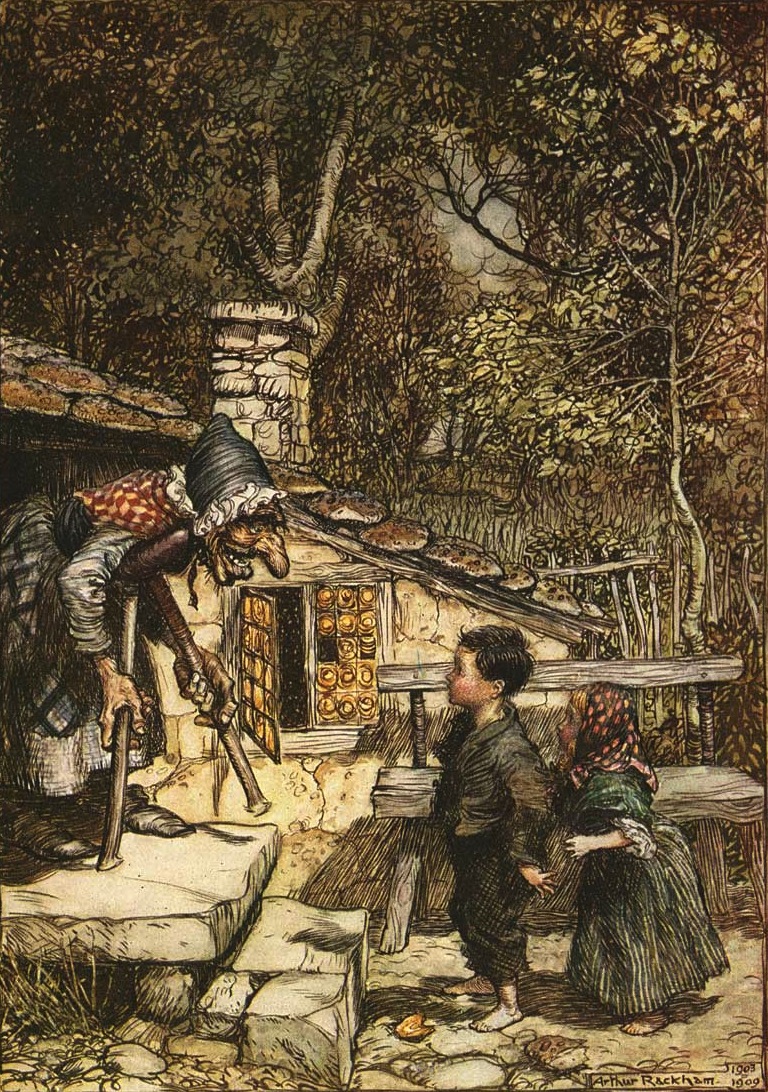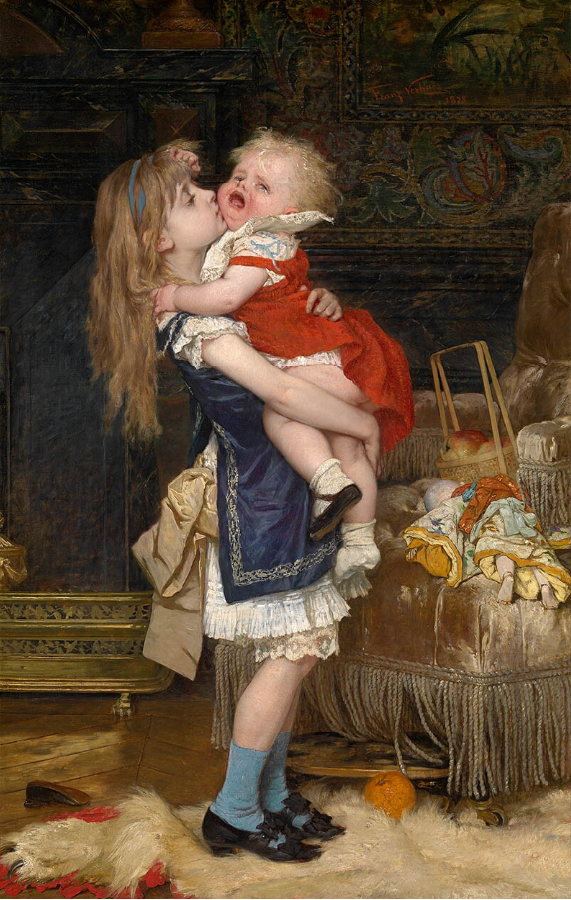|
Aufhocker
The aufhocker or huckup is a shapeshifter in German folklore. Characteristics The Aufhocker is described in German legend as having an unidentifiable shape because it takes on shapes such as a goblin, a beautiful woman, a dead man, or various animals. Legend The name Aufhocker means "leap upon". This name is used because according to legend, the Aufhocker would leap upon the back of its victimsRose, Carol (2001). "Giants, Monsters and Dragons: An Encyclopedia of Folklore, Legend and Myth", p. 30. which are often thieves and criminals that need to be taught a lesson. Other common targets in the Aufhocker legend are lone travelers and old women. The Aufhocker is known as a pressure spirit or perching spirit because it jumps on the backs of travelers weighing them down with every step. The victims often die of exhaustion because the Aufhocker cannot be shaken off or killed. However, it is believed that travelers can free themselves if they are able to make it home before being ... [...More Info...] [...Related Items...] OR: [Wikipedia] [Google] [Baidu] |
Shapeshifter
In mythology, folklore and speculative fiction, shape-shifting is the ability to physically transform oneself through an inherently superhuman ability, divine intervention, demonic manipulation, sorcery, spells or having inherited the ability. The idea of shape-shifting is in the oldest forms of totemism and shamanism, as well as the oldest existent literature and epic poems such as the ''Epic of Gilgamesh'' and the ''Iliad''. The concept remains a common literary device in modern fantasy, children's literature and popular culture. Folklore and mythology Popular shape-shifting creatures in folklore are werewolves and vampires (mostly of European, Canadian, and Native American/early American origin), ichchadhari naag and ichchadhari naagin (shape-shifting cobras) of India, the huli jing of East Asia (including the Japanese ''kitsune'' and Korean ''kumiho''), and the gods, goddesses, and demons and demonesses like succubus and incubus and other numerous mythologies, ... [...More Info...] [...Related Items...] OR: [Wikipedia] [Google] [Baidu] |
German Folklore
German folklore is the folk tradition which has developed in Germany over a number of centuries. Partially it can be also found in Austria. Characteristics It shares many characteristics with Nordic folklore and English folklore due to their origins in a common Germanic mythology. It reflects a similar mix of influences: a pre-Christian pantheon and other beings equivalent to those of Norse mythology; magical characters (sometimes recognizably pre-Christian) associated with Christian festivals, and various regional 'character' stories. As in Scandinavia, when belief in the old gods disappeared, remnants of the mythos persisted: Holda, a "supernatural" patron of spinning; the Lorelei, a dangerous Rhine siren derived from 19th-century literature; the spirit Berchta (also known as Perchta); the Weiße Frauen, a water spirit said to protect children; the Doppelgänger, supernatural beings said to resemble the exactly similar appearance of determined person; the Wild Hunt (in Ge ... [...More Info...] [...Related Items...] OR: [Wikipedia] [Google] [Baidu] |
Theriomorph
The word ''zoomorphism'' derives from the Greek ζωον (''zōon''), meaning "animal", and μορφη (''morphē''), meaning "shape" or "form". In the context of art, zoomorphism could describe art that imagines humans as non-human animals. It can also be defined as art that portrays one species of animal like another species of animal or art that uses animals as a visual motif, sometimes referred to as "animal style." In ancient Egyptian religion, deities were depicted in animal form which is an example of zoomorphism in not only art but in a religious context. It is also similar to the term therianthropy; which is the ability to shape shift into animal form, except that with zoomorphism the animal form is applied to a physical object. It means to attribute animal forms or animal characteristics to other animals, or things other than an animal; similar to but broader than anthropomorphism. Contrary to anthropomorphism, which views animal or non-animal behavior in human terms, zoo ... [...More Info...] [...Related Items...] OR: [Wikipedia] [Google] [Baidu] |
Vampirism
A vampire is a mythical creature that subsists by feeding on the Vitalism, vital essence (generally in the form of blood) of the living. In European folklore, vampires are undead, undead creatures that often visited loved ones and caused mischief or deaths in the neighbourhoods they inhabited while they were alive. They wore shrouds and were often described as bloated and of ruddy or dark countenance, markedly different from today's gaunt, pale vampire which dates from the early 19th century. Vampiric entities have been Vampire folklore by region, recorded in cultures around the world; the term ''vampire'' was popularized in Western Europe after reports of an 18th-century mass hysteria of a pre-existing folk belief in the Balkans and Eastern Europe that in some cases resulted in corpses being staked and people being accused of vampirism. Local variants in Eastern Europe were also known by different names, such as ''shtriga'' in Albanian mythology, Albania, ''vrykolakas'' in G ... [...More Info...] [...Related Items...] OR: [Wikipedia] [Google] [Baidu] |
Night Terror
Night terror, also called sleep terror, is a sleep disorder causing feelings of panic or dread and typically occurring during the first hours of stage 3–4 non-rapid eye movement (NREM) sleep and lasting for 1 to 10 minutes. It can last longer, especially in children. Sleep terror is classified in the category of NREM-related parasomnias in the International Classification of Sleep Disorders. There are two other categories: REM-related parasomnias and other parasomnias. Parasomnias are qualified as undesirable physical events or experiences that occur during entry into sleep, during sleep, or during arousal from sleep. Sleep terrors usually begin in childhood and usually decrease as age increases. Factors that may lead to sleep terrors are young age, sleep deprivation, medications, stress, fever, and intrinsic sleep disorders. The frequency and severity differ among individuals; the interval between episodes can be as long as weeks and as short as minutes or hours. This has c ... [...More Info...] [...Related Items...] OR: [Wikipedia] [Google] [Baidu] |
Charente-Maritime
Charente-Maritime () is a department in the Nouvelle-Aquitaine region on the southwestern coast of France. Named after the river Charente, its prefecture is La Rochelle. As of 2019, it had a population of 651,358 with an area of 6,864 square kilometres (2,650 sq mi). History Previously a part of the provinces of Saintonge and Aunis, Charente-Inférieure was one of the 83 original departments created during the French Revolution on 4 March 1790. On 4 September 1941, during World War II, it was renamed as Charente-Maritime. When the department was first organised, the commune of Saintes was designated as the prefecture of the department (Saintes had previously been the capital of Saintonge). This changed in 1810 when Napoleon passed an imperial decree to move the prefecture to La Rochelle. During World War II, the department was invaded by the German Army and became part of occupied France. To provide defence against a possible beach landing by the Allies, the Organisation Tod ... [...More Info...] [...Related Items...] OR: [Wikipedia] [Google] [Baidu] |
German Legendary Creatures
German(s) may refer to: * Germany (of or related to) **Germania (historical use) * Germans, citizens of Germany, people of German ancestry, or native speakers of the German language ** For citizens of Germany, see also German nationality law **Germanic peoples (Roman times) * German language **any of the Germanic languages * German cuisine, traditional foods of Germany People * German (given name) * German (surname) * Germán, a Spanish name Places * German (parish), Isle of Man * German, Albania, or Gërmej * German, Bulgaria * German, Iran * German, North Macedonia * German, New York, U.S. * Agios Germanos, Greece Other uses * German (mythology), a South Slavic mythological being * Germans (band), a Canadian rock band * "German" (song), a 2019 song by No Money Enterprise * ''The German'', a 2008 short film * "The Germans", an episode of ''Fawlty Towers'' * ''The German'', a nickname for Congolese rebel André Kisase Ngandu See also * Germanic (other) * Germa ... [...More Info...] [...Related Items...] OR: [Wikipedia] [Google] [Baidu] |
Vampires
A vampire is a mythical creature that subsists by feeding on the vital essence (generally in the form of blood) of the living. In European folklore, vampires are undead creatures that often visited loved ones and caused mischief or deaths in the neighbourhoods they inhabited while they were alive. They wore shrouds and were often described as bloated and of ruddy or dark countenance, markedly different from today's gaunt, pale vampire which dates from the early 19th century. Vampiric entities have been recorded in cultures around the world; the term ''vampire'' was popularized in Western Europe after reports of an 18th-century mass hysteria of a pre-existing folk belief in the Balkans and Eastern Europe that in some cases resulted in corpses being staked and people being accused of vampirism. Local variants in Eastern Europe were also known by different names, such as ''shtriga'' in Albania, ''vrykolakas'' in Greece and ''strigoi'' in Romania. In modern times, the vampire ... [...More Info...] [...Related Items...] OR: [Wikipedia] [Google] [Baidu] |




_-_Google_Art_Project.jpg)